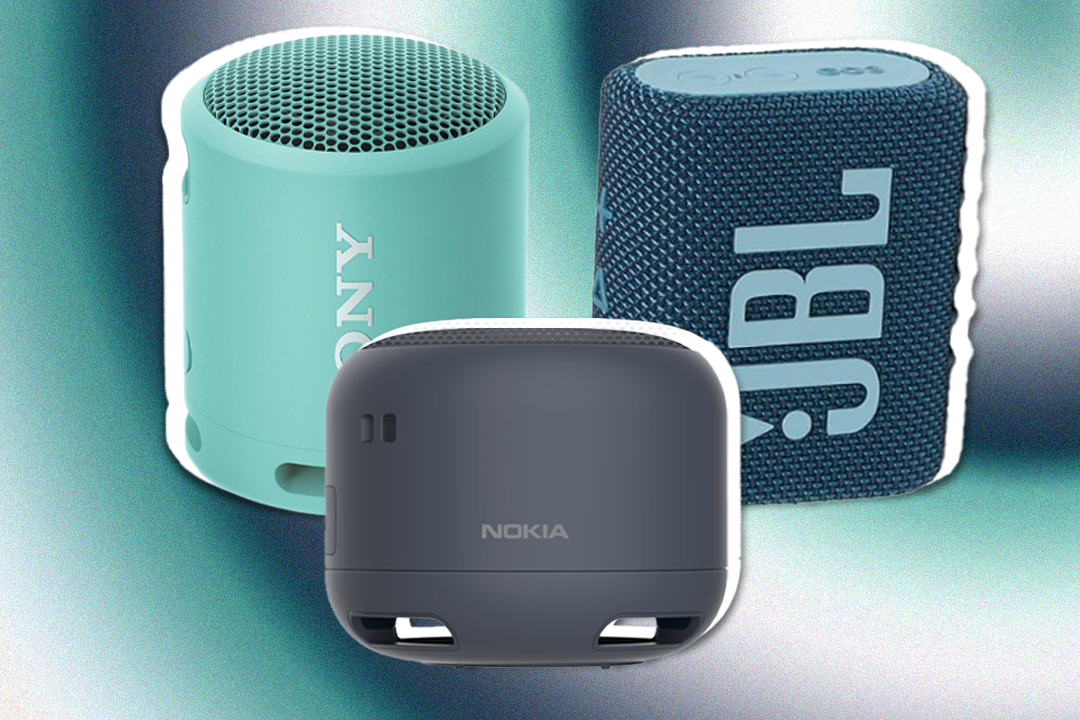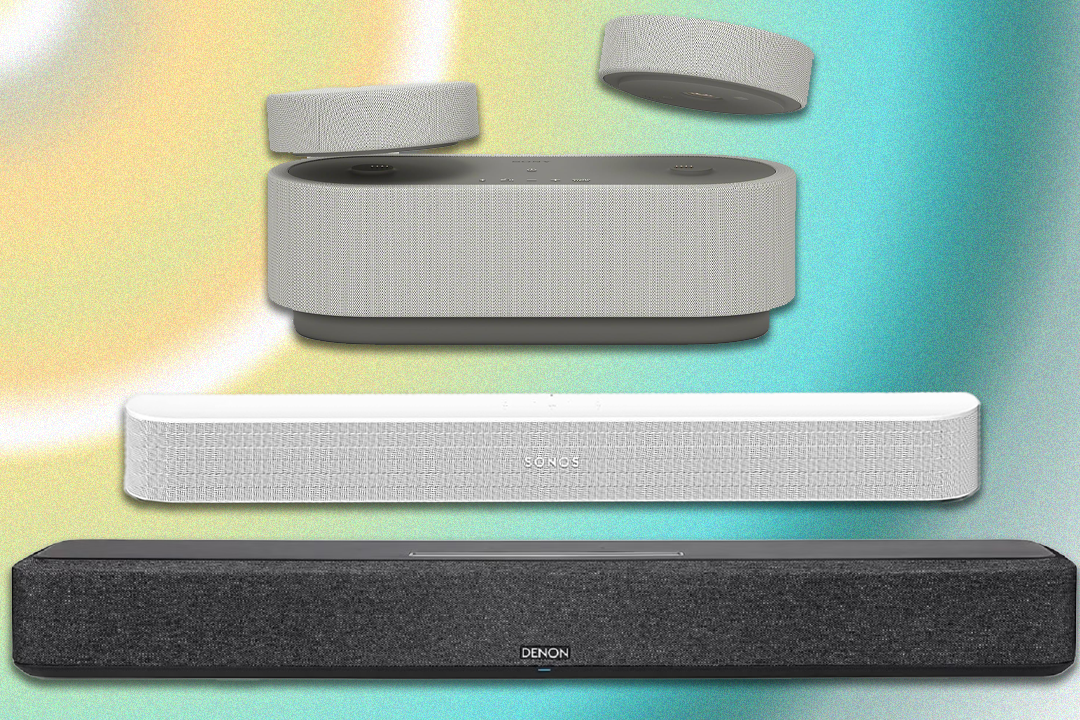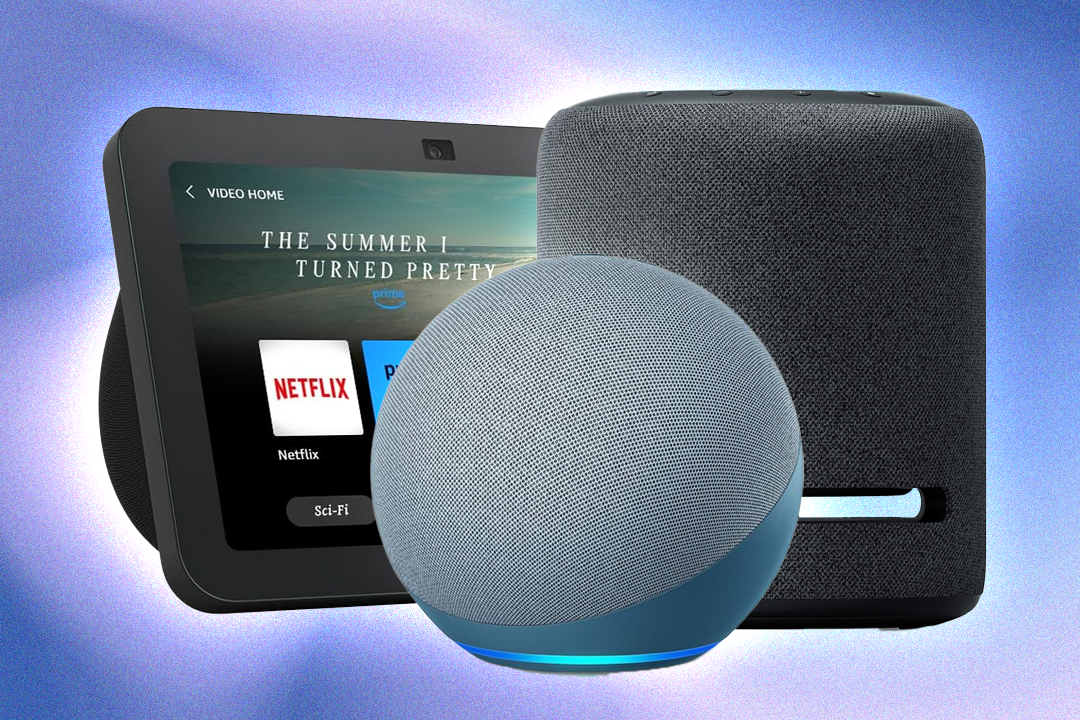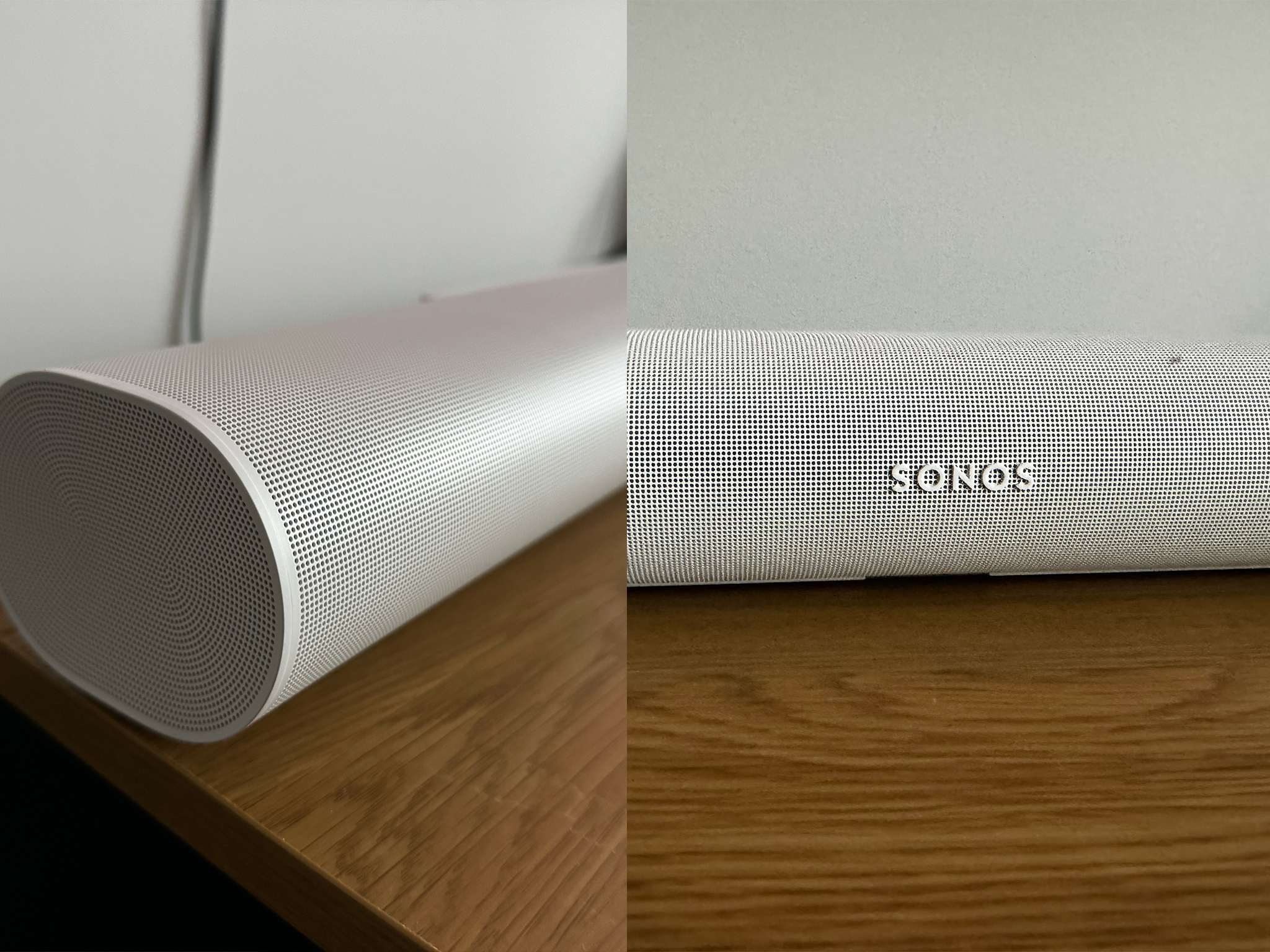Sonos arc ultra
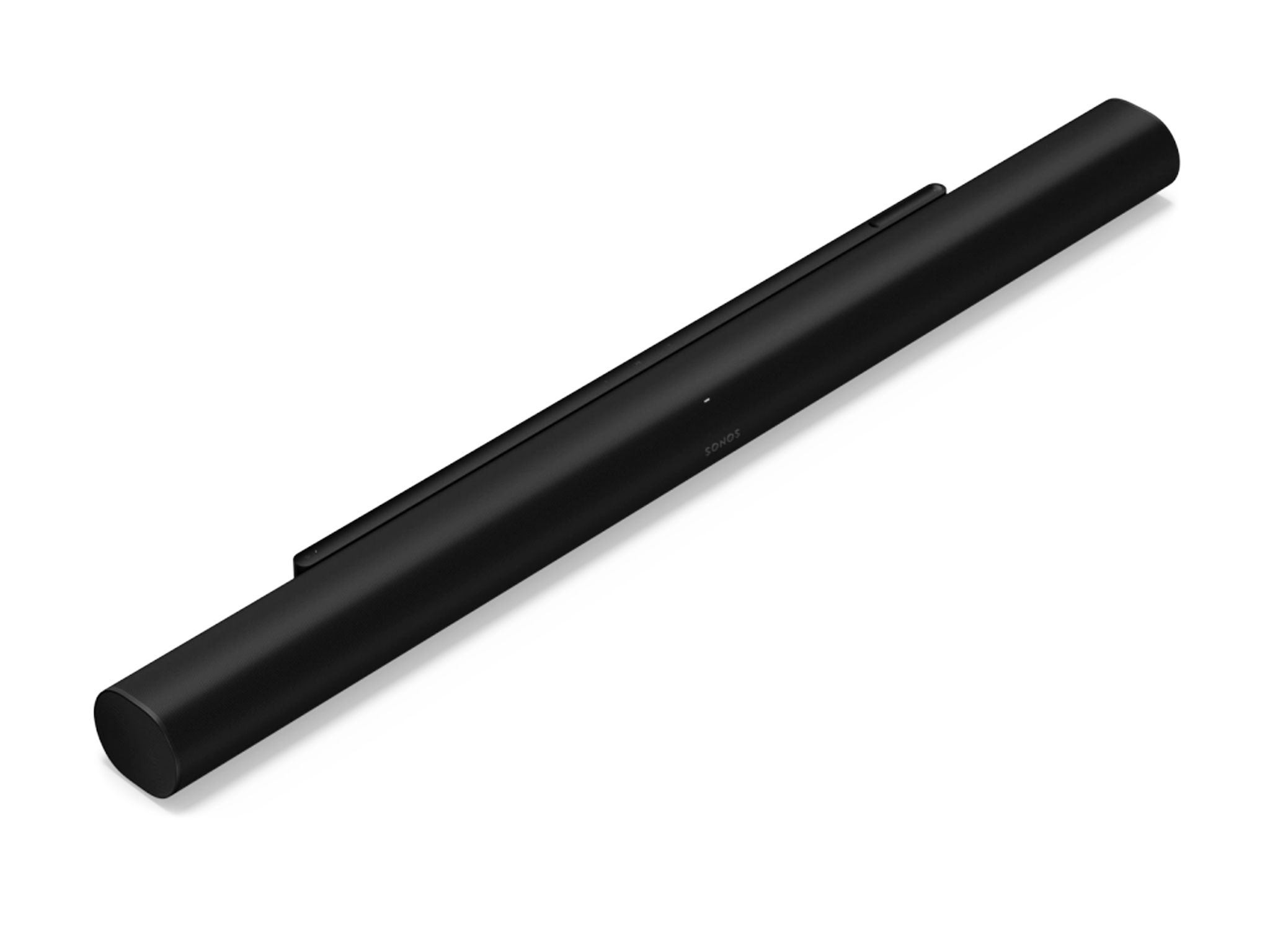
- Dimensions: 117.8cm x 7.5cm x 11.06cm
- Weight: 5.9kg
- Speaker configuration: 9.1.4
- Connections: Optical, ethernet, wifi 6, HDMI ARC and eARC, Bluetooth 5.3, AirPlay 2
- Sound formats: Dolby Atm
- Why we love it
- Incredible bass – improved massively
- Room-filling audio
- Sleeker design
- Speech and dialogue come across very clearly
- More Android-friendly
- Take note
- Still no DTS:X support
Design
Sonos is continuing its minimalist design ethos with the arc ultra. Like its predecessor, the tubular soundbar with wrap-around grills comes in either black or white, and is just slightly less beastly in terms of size. It’s a tiny bit longer on either side but it’s significantly skinnier. It kind of blows my mind that it appears smaller than the bulbous Sonos arc yet has more drivers on the inside, as well as a Sound Motion subwoofer.
There are some design differences, however. The Sonos arc ultra has a new panel for its touch controls at the back of the speaker, directly in the centre, and there’s now a Bluetooth pairing button. Yes, that means it works with Android devices, not just iPhones via AirPlay 2. I love the new volume controls, too – you control the volume by swiping left and right on an indented strip on the right, making it much easier to find. There’s still the little alcove at the back for the HDMI eARC, power and ethernet port. It looks signature Sonos and as premium as always.
The Sonos app has been pretty much restored to its former glory, and setup is as easy as ever. You just plug the arc ultra into the wall, hook up the HDMI to your TV and the soundbar, and open up the app to get started. One of the best parts about the setup is that Trueplay has been updated with a new quick-tuning feature, which is excellent.
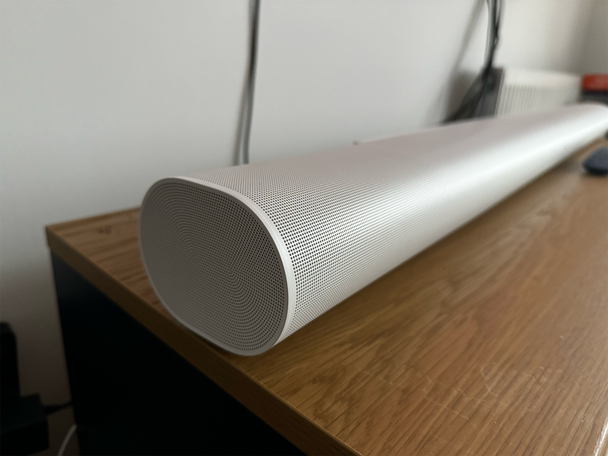
I hated having to walk around, waving my phone in the air to get it to calibrate the audio to my living room, but the quick tuning does it all by itself, with one tap of a button in the app. It made things sound just as good if I were to Trueplay manually during setup. It’s also compatible with Android devices now, so you won’t need to borrow someone’s iPhone. You can also add on any subwoofers, such as the new Sub 4 and rear speakers.
As before, if you want to play true Dolby Atmos, you’re going to need a TV that supports eARC (the “e” stands for enhanced, which is necessary for those higher-quality Dolby Atmos signals). If your TV only has an ARC port, you’ll still be receiving Atmos, but it will be over Dolby Digital Plus – which means the sound will be a little more compressed and lossy.
Sound
So, how does it all sound? In a word: magical. The sound fills every corner of the room, adding height and depth and making every bit of content sound intense and superb. After all, there are a whopping 14 drivers on the inside, with a 9.1.4-channel configuration. Seven silk-dome tweeters, with two firing upwards, help with those crisp high-frequency sounds, while the six woofers are responsible for the mid-range sounds. The biggest change, however, is the inclusion of something that Sonos calls Sound Motion, a four-motor dual-membrane woofer that provides booming bass, without increasing bulk to the speaker itself.
Read more: Best wireless earbuds, reviewed
One issue I had with the original Sonos arc was that sometimes dialogue in films and TV shows came across as a bit muffled, but this has been massively improved on the arc ultra. Sonos has improved the centre channel for better dialogue and speech clarity, and the speech enhancement feature inside the app continues to boost them even further.
I’m always struggling to hear what people are saying in films – a lot of that is down to the way sound is mixed in post-production these days, but the new Sonos soundbar remedies this massively. Dialogue came across significantly clearer on the latest soundbar compared to the arc, even with the speech enhancement feature turned off. I never needed to turn up the volume to hear what people were saying in Mr. and Mrs. Smith, and voices were crystal clear when watching non-Atmos content, such as the news or Big Brother. It solved my biggest bugbear about TV audio, with voices filling the room instead of feeling narrow and hollow.
The speaker configuration ensures the sound reaches every corner of my room, with the up-firing speakers adding a good sense of height, and the side-firing speakers adding depth and widening the soundstage.
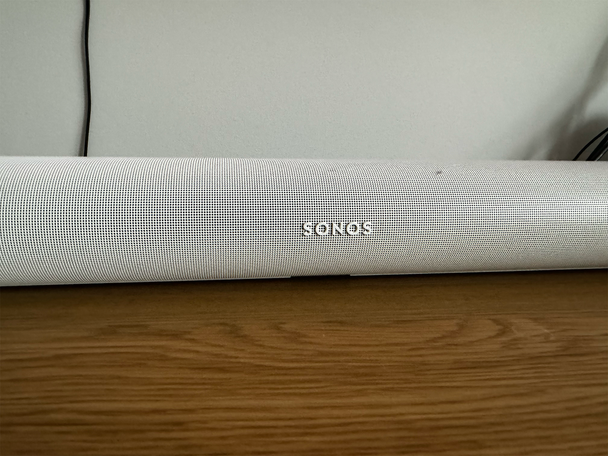
The absolute star of the show, though, has to be sound motion. One of the problems with the Sonos arc was that, while it got loud, I never felt the rumbles or felt my heart race during action scenes. If I wanted to feel the bass in a film, I had to pair it with a separate subwoofer. This is not the case with sound motion, which provides an added bass response.
While it didn’t give me the same experience as being in the cinema – you’ll still need to buy the sub 4 for that – bass was much better. Sound felt absolutely explosive when watching the sandworm scene in Dune: Part Two. While it didn’t rattle the room, I could almost feel the bass. Before, scenes like that would fill the room, but I wouldn’t get a sense of depth. I do now, and it’s epic. If you don’t want to splurge out on a separate sub, the bass is pretty darn good with the new Sound Motion woofer.
Read more: Top TVs, reviewed by experts
Annoyingly, while watching films in Dolby Atmos is great, the Sonos arc ultra still doesn’t support DTS:X. While a lot of Blu-Rays now come with Dolby Atmos tracks, many still use DTS:X, so, physical-media fans who have Blu-Rays that only support DTS:X won’t be able to hear their favourite films in an immersive, surround-sound environment.
Listening to music was also a joy. Chappell Roan’s Rise and Fall of a Midwest Princess album sounded full and loud, while the vocals came across as clean and clear. There’s also an equaliser in the Sonos app, if you want to tamper a little with the sound. It performs well at filling an entire room, helped along by its frankly domineering presence below the TV set. Bass on Massive Attack’s ‘Angel’ was frankly glorious, really illustrating the improvements in bass clarity. It still struggles a little with deep, sub-bass but, for general bass response, it does great.
Just like the Sonos arc, the far-field microphones worked well at picking up my voice – even from another room, and those microphones also double up as Trueplay tuning devices. It’s still a better smart speaker than a standalone Amazon Echo, with better sound and voice pick-up.

